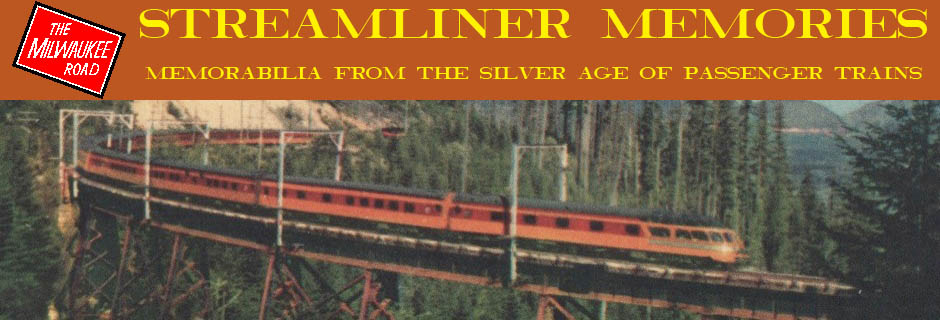The 20th Century Limited may have been “the most famous train in the world,” but Pennsylvania’s Broadway Limited was physically equal to it in every possible way. So it is no surprise that the Pennsylvania reequipped its flagship train in March, 1949, just six months after the New York Central inaugurated a new 20th Century Limited.

Click image to view a 1.0-MB JPG of this advertisement from the April 30, 1949 Colliers magazine.
Like the Century, the Broadway had twin-unit diners, with one car serving as a kitchen/crew dorm and the other as a 68-seat diner. Though the all-room trains had a capacity of only about 200 passengers, compared with more than 300 for many coach or coach-and-Pullman trains, the two railroads apparently believed that the extra-fare passengers riding their top trains shouldn’t be kept waiting to sit in the 36-seat diners that were typical of the time. Prior to the twin-unit diners, the railroads often ran two separate diners in the trains’ consists.

Mountain View, one of the blunt-end observation cars for the 1948 Broadway, is now on display in a railroad museum in Altoona, Pennsylvania. This photo was taken by David Sommer.
One difference between the two trains was in the observation cars. While the Century‘s round-tail observation cars featured extra-large windows for viewing scenery from their lounges, the Pennsylvania decided to use blunt-end observation cars, de-emphasizing the scenery by facing all of their lounge seats inward. The front half of the Century‘s observation cars had five double bedrooms, while the Broadway‘s had one double bedroom and two master rooms–a rarely seen Pullman room that slept just two but was twice as big as a double bedroom and included a shower. According to New York Central’s 1938 timetable, a master room was used on that era’s Twentieth Century Limited, but the 1948 timetable shows it was dropped by the post-war train.

Unfortunately, I don’t own a 1949 brochure for the Broadway Limited (update: see this post), but here is a no-doubt much more austere one from 1964. Click image to download a 1.9-MB PDF of this brochure.
